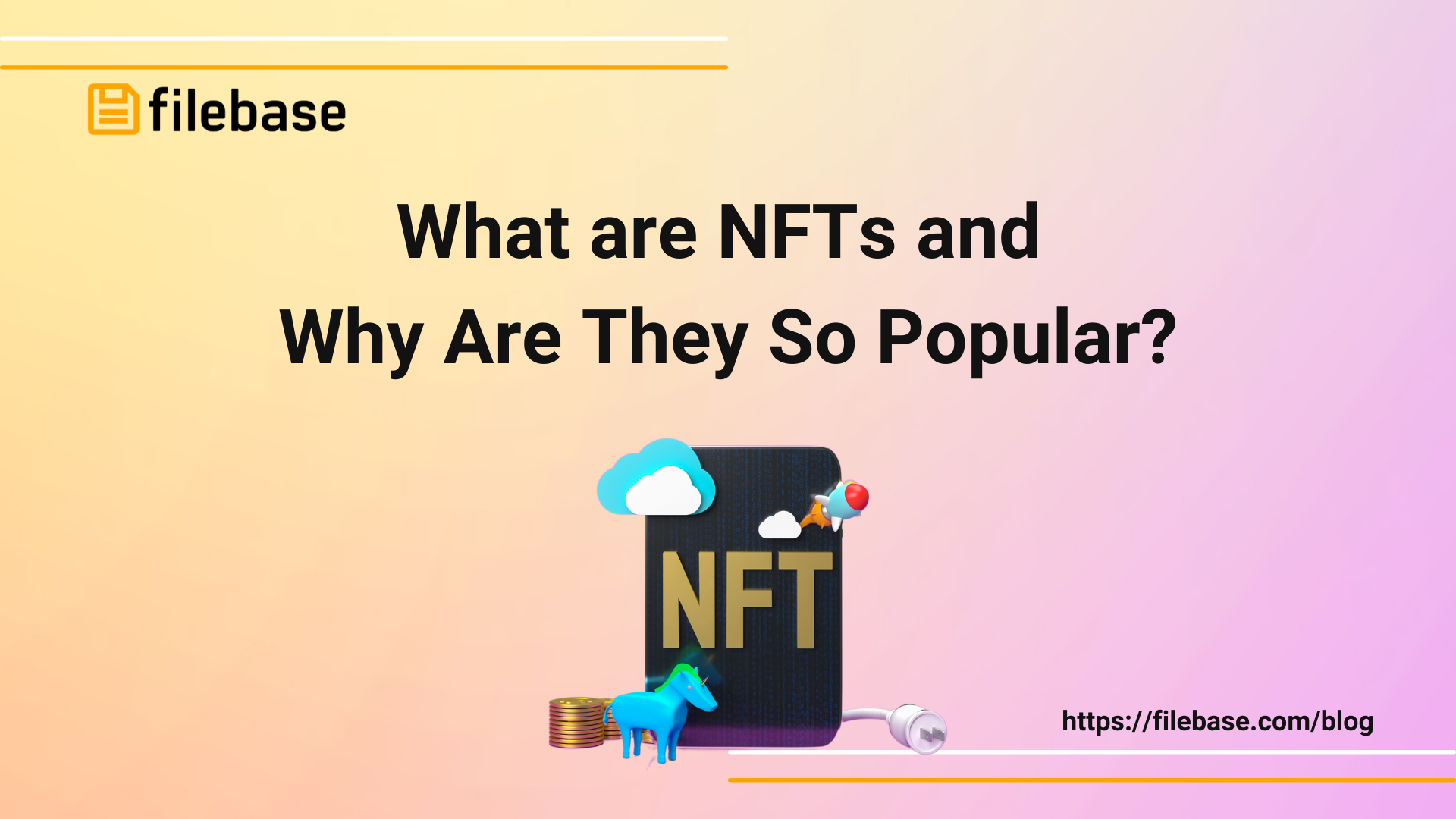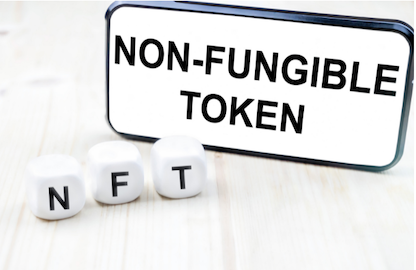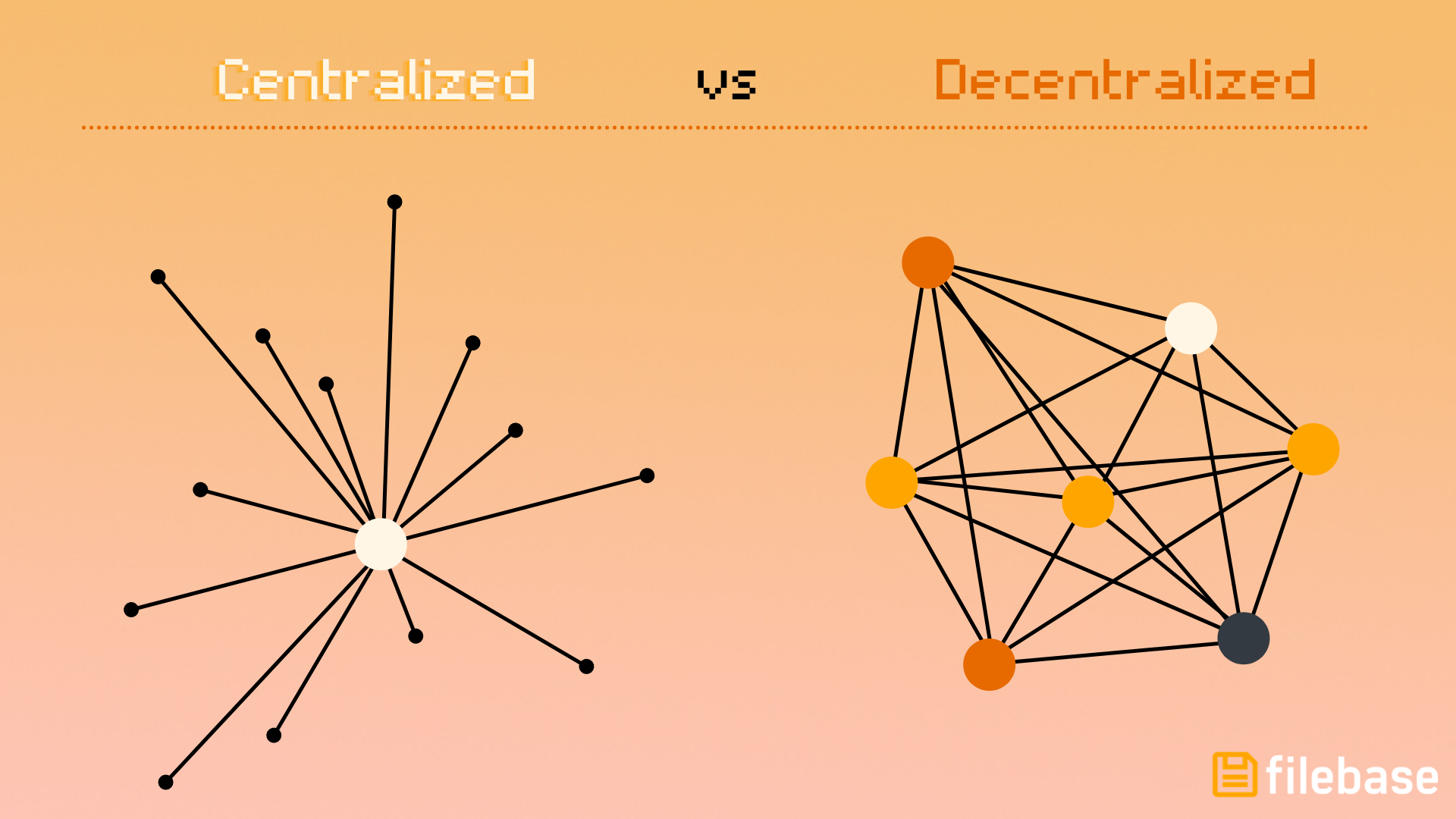What are NFTs and Why Are They So Popular?
Learn more about NFT's and what makes them so popular. Use Web3 to mint/store/display them properly using Filebase and Decentralized Cloud Storage.

Maybe you’ve seen news articles or social media posts about NFTs. Maybe you even got one as a Christmas gift this year! Regardless how you’ve heard about them, you’re probably still wondering exactly what they are and why there's so much buzz around them right now.
What is an NFT?
NFTs, also known as “non-fungible tokens”, are a type of crypto-asset that represents a unique token. Crypto-assets are digital assets that utilize technologies such as peer-to-peer networks, cryptography, and rely on a public ledger to execute transactions. Crypto-assets include cryptocurrencies, platform tokens, NFTs, and many other forms of tokens that utilize these technologies.

NFTs can take the form of any digital asset. The most popular NFTs right now are digital works of art, though NFTs can be videos, audio files, or pieces of writing.
Fungible assets are all the same and interchangeable. Think of a dollar bill or a bitcoin. Each dollar bill is worth the exact same and each bitcoin is worth the exact same.
In contrast, each NFT is unique in appearance and value. NFTs are not interchangeable with one another due to their unique nature. Think of them similar to concert tickets. While each ticket might be the same price, they are not interchangeable since each ticket represents a unique seat in the venue at a specific date and time for each different live show.
Can You Make Your Own NFTs?
Many artists and content creators create their own NFTs then list them for sale on NFT marketplaces such as OpenSea, Rarible, or Solana. NFTs can be as simple as 8-bit illustrations of dogs or photographs you’ve taken, and can be as complex as 3D virtual world maps.
Some creators are curating ‘collections’ of NFTs where each NFT includes a character or image that is part of the collection’s theme. One project collection that is skyrocketing in value is the Bored Ape Yacht Club, which began to skyrocket after Eminem tweeted that he bought an NFT from this collection for $452,000.
The process of making an NFT and listing it on a marketplace is known as 'minting'.
'Minting' in the most basic form refers to creating anything on a blockchain network. Minting is not NFT specific, though listing an NFT for sale on a marketplace such as OpenSea or Rarible qualifies as minting. When you upload an NFT to a marketplace, it creates the NFT along with what is known as a Smart Contract on the chosen blockchain network.
A Smart Contract is a program that is stored and executed on the blockchain. It contains the NFT's metadata, such as the name of the NFT, a URL to the NFT data file, a description of the NFT, and any other data the creator has included. If the NFT is part of a collection, sometimes there will be metadata stating it's position in the collection and its rarity compared to other NFTs in the collection.
When a creator uploads an NFT through a marketplace's web interface like OpenSea, they fill out a variety of fields with information about the NFT. On the backend, OpenSea creates the Smart Contract that stores the NFT's metadata.

Smart Contracts can be created as files and sent to a blockchain network without using a marketplace's web interface. By using this method, the creation of NFTs to be automated within a trustless system. If an NFT collection has 10,000 pieces in it, it would take the developer team a long time to manually upload and input the metadata to a marketplace such as OpenSea through their web interface. By creating Smart Contracts as files, humans can be removed from the minting process and a program can do the leg work.
Storing NFTs
If you decide to make your own NFTs, where do you store them and their associated metadata?
The most secure and efficient option is to store your NFT collection and its data is on a decentralized cloud. Decentralized cloud storage, such as Filebase, is not only secure but durable. With attributes such as geo-redundancy, and security through erasure coding, Filebase is highly resilient against outages. Other cloud providers that use a traditional centralized infrastructure like AWS, are prone to outages, like the AWS US-EAST-1 outage in December 2021. This outage brought thousands of businesses down for multiple hours, disturbing company's revenue and interrupting customer's days.

By utilizing a decentralized cloud to store your NFT collection, you can rest assured that your NFTs are always accessible to the user's who want to buy, sell, and trade them, as they won't be susceptible to outages like the one Amazon faced. Users on the Filebase platform thankfully do not need to worry about "What Happens When My Cloud Goes Down?".
What makes NFTs so popular?
NFTs began to gain publicity and popularity last February when an artist named Beeple sold a 10 second video for $6.6 million dollars. Shortly after, a Wisconsin based artist sold a collage of 5,000 digital pieces of art at auction for $69 million dollars.
Each NFT comes with a unique token. These tokens are similar to when pieces of art or collectibles have a certificate of authenticity - it proves that the NFT is authentic and original. These tokens can be used as authentication keys, similar to API access and secret keys. NFTs are currently being used for things like virtual NBA trading cards, accessing original pieces of art and memes, or even for buying virtual real estate in the Decentraland.
While some NFTs are gaining popularity purely on appearance and collectability, a variety of brands and companies such as Taco Bell and Pizza Hut are announcing plans to utilize NFTs for things such as promotional deals that include free products or content.
NFTs don’t have to be a part of a collection or have additional perks and benefits such as metaverse content and usability. These benefits often help drive the price of NFTs though, since an NFT with more features than just digital art make it more valuable to NFT collectors. Some NFT collections, such as NBA trading cards, have collector’s value that don’t rely on additional perks that allow the value to increase purely based on the trading value of the NFTs.
If you got an NFT for Christmas, you’re probably wondering what you should do with it. Depending on what collection the NFT is part of, you might be able to utilize it as a token in the creator’s metaverse or receive exclusive content and products from companies based on the NFT you purchase. Some music artists are moving to an NFT marketing model, requiring fans to purchase the artists' NFT in order to have access to their latest song or album.
Of course, you can sell it, or hold onto it and allow it to potentially gain value similar to cryptocurrency.
Conclusion
While NFTs are still a relatively new technology and crypto-asset, they're not going anywhere any time soon.
NFTs are predicted to be widely adopted and be used for additional use cases such as gaming, marketing, and luxury goods in 2022, so keep an eye on them, and if you got one last Christmas, hold onto it!
Filebase is widely used for static content delivery "type" use-cases - One of our customers CardMarket saved 90%+ off their cloud storage bill switching from AWS to Filebase.
There's still plenty of time to get involved with NFTs, whether it be investing in an existing collection, or creating your own. If you're interested in creating or storing your own, check out Filebase's guide on how to create and mint your own NFT with Filebase and Alchemy, or how to create your own NFT marketplace with Filebase and Flow.
Filebase NFT Documentation Section - https://docs.filebase.com/web3-resources/nfts
Experience the power of Web3 in seconds: Get started with 5GB of free object storage with no expirations and no trials.
Need more storage? Use code "WEB3WELCOME" for 1TB of storage (your first month free) on us!

